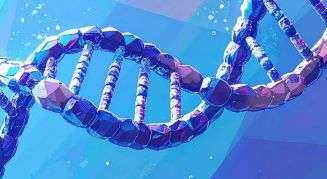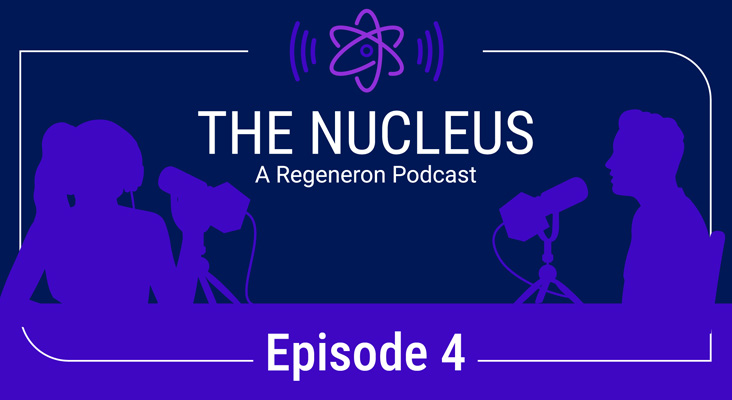Research & Preclinical Development
Addressing Painful Memories From Within
November 21, 2019
Understanding the biological challenges to treating pain
By: Susan Croll, PhD, Senior Director Emeritus, Neuroscience, and Director Emeritus, Regeneron Postdoctoral Training Program

People need safer and more effective therapeutic options to address their chronic pain. We want to use the power of science to help them.
Memory. It makes us who we are and allows us to learn from the past. I have always been interested in how nervous system remodeling allows us to remember our experiences, often for a lifetime. Memory is usually a good thing, and my early research focused on preserving it. While I was studying the mechanisms of neural remodeling, I encountered the concept of maladaptive remodeling – changes in neurons’ structure that lead to negative repercussions – and among the most fascinating examples of this was phantom limb pain. In this phenomenon, the body ‘remembers’ and experiences pain in an amputated limb. The realization that chronic pain is, in a sense, another form of memory led me down a new path. If I could study how to preserve memory circuitry with protective agents, why couldn’t I also study how to eliminate maladaptive pain circuitry by blocking them? It was this new perspective that led me into the pain field.
When I first began working in pain in the 1990s, there were few truly effective treatment options for people with chronic pain. Fast forward to today and the current standard approaches, such as non-steroidal anti-inflammatory drugs, anti-neuropathic pain drugs, and opioids, produce inadequate pain relief for many chronic pain sufferers. In addition, far too many Americans are personally familiar with the public health crisis created by overreliance on these prescription opioids.
Opioids work by binding to and activating opioid receptors on cells in the brain, spinal cord and other organs, including those involved in pain and pleasure. When opioids attach to these receptors, they reduce pain signals, but they also lead to dopamine release in the brain’s reward system, leading to a pleasurable sensation or ‘high.’ Unfortunately, the rewarding effect of opioids can lead to abuse and addiction, which can have devastating effects physically, emotionally, and economically.1
Separating acute from chronic pain
In many disease states our goal is to stop a pathological process, such as the growth of tumors. We identify a target for inhibiting the process and then create a therapeutic tool to address it, aiming for the most specific approach that minimizes side effects. Pain is not that straightforward. Although ‘pain’ is a pathological state, we can’t inhibit it completely.
Pain is an important defense mechanism to ensure that we protect our bodies from injury.
If touching a hot stove didn’t hurt, we would burn ourselves because we wouldn’t pull our hands back quickly enough to avoid damage. To deal with the challenge of treating pain without eliminating it, we separate acute pain from chronic pain. Acute pain is necessary and adaptive, while chronic pain should be treated to relieve suffering. In order to separate these two types of pain for therapeutic purposes, we work to identify the biological pathways and mechanisms that dissociate them.
For many years, I’ve worked with my fellow researchers at Regeneron to investigate which biological pathways or mechanisms initiate, sensitize or sustain chronic pain with the goal of preventing, alleviating or reversing it. Our work in the biology of chronic pain has suggested that growth factors may play a role in either the transition from acute to chronic pain or in chronic pain maintenance.
What is a growth factor?
A growth factor is a protein made by the body that can stimulate cell survival, growth, proliferation, healing and cellular differentiation.
Specifically, growth factors appear to drive changes in the sensitivity of biological signals and/or in the remodeling of nerve terminals over time during chronic pain states – in other words, how your body remembers and responds to pain. With this knowledge, we study how to target growth factors to provide relief from chronic pain.
Tapping into growth factors
Regeneron has an institutional memory of our own when it comes to growth factor biology. Back in the 1990s, we spent a lot of time uncovering the basic biology of growth factors, including cloning some of the growth factors and growth factor receptors. But this initial commitment to exploring growth factors hit a snag in 1997 when our first neurotrophic factor Phase 3 trial did not achieve its primary endpoint in patients with amyotrophic lateral sclerosis, or Lou Gehrig’s disease. While disappointing, we took this failure as an opportunity enhance our understanding of growth factors so we could take another shot at them in the future. Today, we understand substantially more about the wide variety of physiological processes in which growth factors are involved, and most importantly, how we can use this information to intervene in chronic pain.
We’re taking a broad approach to evaluating the potential for growth factor manipulations to treat pain, letting the science show us which areas to pursue further. For instance, we are evaluating a therapy in late-stage clinical studies that inhibits nerve growth factor (NGF). Years of preclinical work show that NGF appears to sensitize the channels that transmit pain signals such that over time lower levels of pain stimuli can trigger a response. Therefore, blocking NGF may help correct this maladaptive pathway – this overactive ‘memory’ of pain – and alleviate discomfort by raising the pain threshold back up.
We are also studying a therapy that inhibits GFRα3, a receptor component in the glial cell-derived neurotrophic factor (GDNF) family of growth factors, because we believe that it, too, may be involved in sensitizing pain signals over time. In addition to preclinical work on the GFRα3 receptor, we are also currently studying it in human patients.
Remembering why we're here
Memory can clearly be a double-edged sword. While certainly helpful to recall what we’ve learned thus far in our scientific research, we also need to keep ourselves honest by continually revisiting how we think about things to avoid becoming dogmatic. I believe in trusting biology to lead the way and that I’ll be most successful if I conduct humble, careful, rigorous science. Sometimes this means revisiting hypotheses with new knowledge – like we’ve done with neurotrophic factors. Hopefully, if we’re open to both tapping our scientific memory and applying new learnings along the way, we can make a meaningful difference for the real people who are facing real pain in a limited, stigmatized therapeutic environment.
References
- “Prescription Opioids.” National Institutes of Health. https://www.drugabuse.gov/publications/drugfacts/prescription-opioids. Last accessed on November 21, 2019.
More Regeneron Stories


